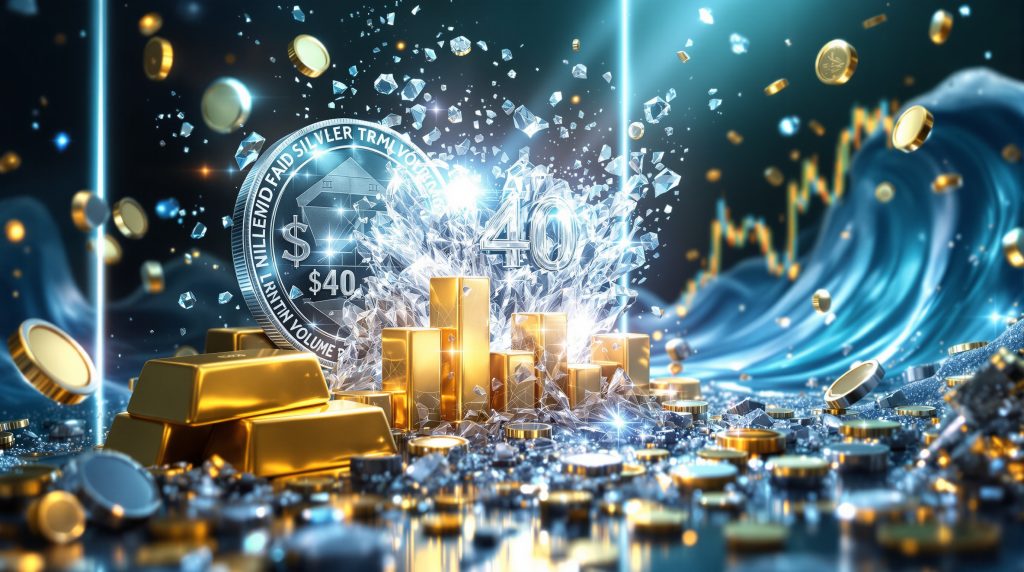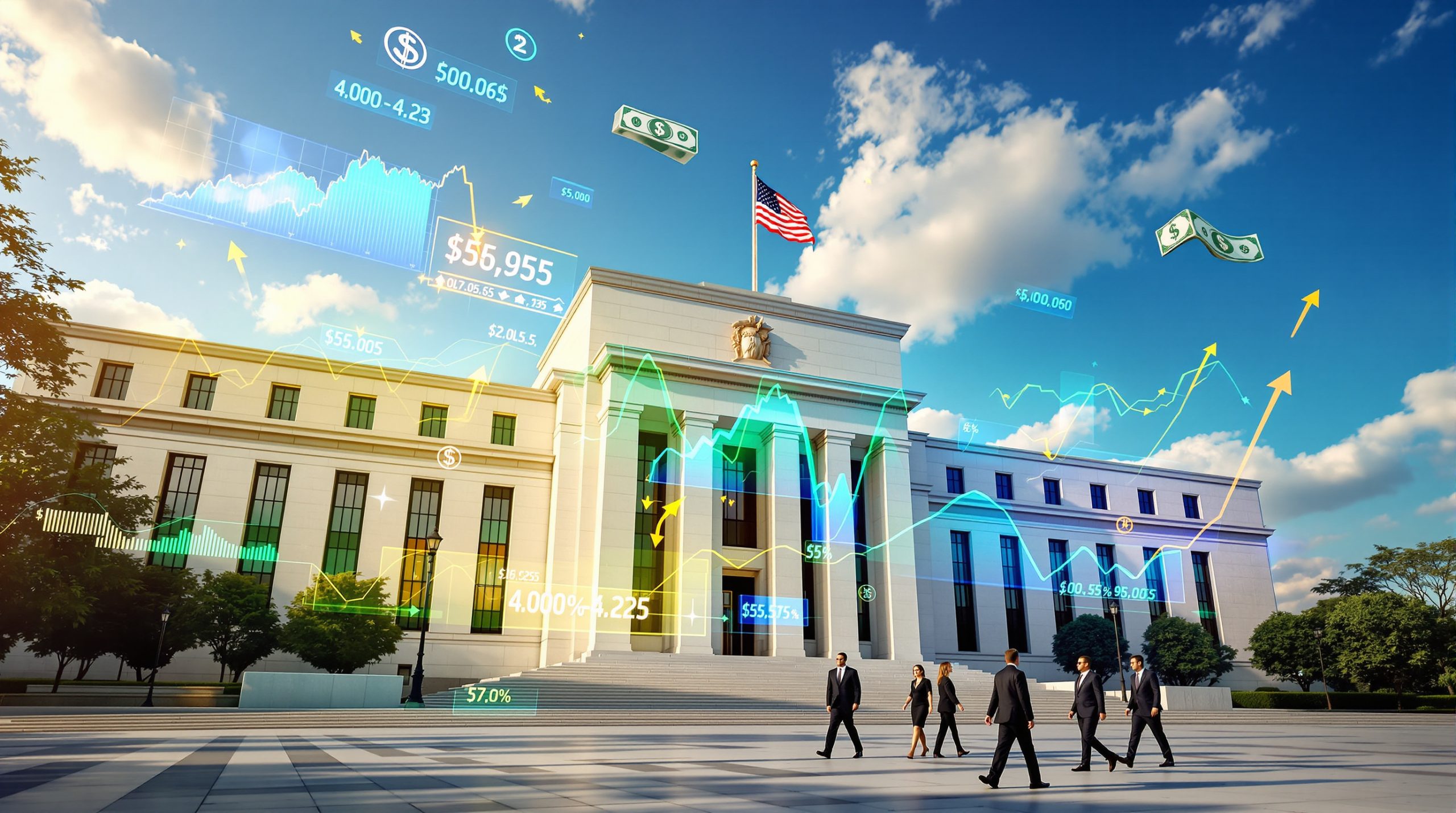How Has Silver Recently Performed in the Precious Metals Market?
Silver has experienced a dramatic surge in 2024, breaking through critical resistance levels that had contained prices for years. This remarkable performance coincides with historic gold highs above $2,500 per ounce, creating widespread excitement throughout the precious metals sector. Silver's upward trajectory follows an extended period of consolidation, potentially signaling a significant turning point in its long-term market cycle.
The rally has been particularly noteworthy for its velocity and conviction, with silver gaining substantial ground in compressed timeframes. Trading data from the London Bullion Market Association shows silver reached approximately $32.50 per ounce in September 2024, representing significant gains from 2023 lows around $20.50 – a more than 50% increase in value.
Market technicians point to increasing trading volume accompanying these moves, suggesting strong conviction behind the price action. This combination of price appreciation and volume expansion typically indicates sustainable trend development rather than temporary price spikes.
Key Silver Price Milestones in 2024
- Surpassed the psychologically important $30 level after multiple failed attempts
- Broke through stubborn resistance at $34, which had contained previous rallies
- Demonstrated consistent outperformance relative to gold
- Gold-to-silver ratio declined from over 80:1 to approximately 75:1, indicating silver's accelerating momentum
This ratio decline is particularly significant for precious metals investors who monitor the relationship between these two metals. Historically, major silver bull markets have been accompanied by sharp declines in the gold-to-silver ratio, suggesting potential for further outperformance.
What Factors Are Driving Silver's Breakout?
Supply and Demand Fundamentals
The silver market is experiencing fundamental shifts in its supply-demand dynamics. Unlike gold, silver maintains dual status as both precious metal and industrial commodity, creating demand from both investment and manufacturing sectors. This hybrid nature makes silver particularly responsive to economic cycles while retaining monetary metal characteristics.
Data from the Silver Institute's 2024 World Silver Survey reveals industrial demand now accounts for approximately 50% of annual silver consumption. This industrial appetite has been particularly strong, with major institutional buyers securing physical metal for manufacturing processes ranging from electronics to renewable energy infrastructure.
The solar panel industry alone consumed over 140 million ounces of silver in 2023, according to industry analysts. Global solar installations grew by an impressive 73% in 2023, as reported by the International Energy Agency's Solar PV Market Report. Each gigawatt of solar capacity requires approximately 500,000 ounces of silver, creating substantial baseline demand that continues to grow annually.
This robust demand confronts constrained supply conditions. Global silver mine production decreased by 1.2% in 2023 to 830.7 million ounces, as several major mining operations reported declining grades and production challenges. This silver supply deficits creates natural upward pressure on prices.
Momentum and Technical Factors
Market momentum has emerged as a significant driver of silver's recent performance. As key technical indicators shifted to bullish postures, algorithmic trading systems recalibrated to buying mode, amplifying price movements. This technical momentum creates self-reinforcing cycles that accelerate price trends.
Technical analysts observe that silver's smaller market size relative to gold creates conditions for larger percentage moves once positive momentum establishes. The current technical landscape features:
- Breakout above multiple key resistance levels that had contained prices for years
- Increasing trading volume confirming price action
- Bullish momentum indicators across multiple timeframes
- Systematic buying signals triggered by algorithmic systems
The London Bullion Market Association reports that algorithmic trading systems have significantly increased their influence on precious metals price discovery mechanisms in recent years, contributing to sharper price moves when key technical levels are breached.
Institutional Positioning
The market structure in silver futures has featured substantial short positioning for extended periods. As prices rise, these short positions face increasing pressure to cover, potentially creating silver market squeeze conditions that further propel prices upward. This market dynamic can produce particularly explosive price movements when combined with new investment interest.
Some central banks and sovereign entities have begun allocating to silver alongside their traditional gold purchases. Recent reports indicate that several Eastern European countries have quietly expanded their silver reserves. Meanwhile, China has permitted its insurance industry to allocate up to 1% of assets to gold – a policy shift that industry observers believe could eventually extend to silver.
The World Gold Council reports increased central bank gold purchases totaling 183 tons in Q2 2024 alone. This sovereign appetite for precious metals signals growing institutional interest in hard assets amid persistent global inflation and geopolitical uncertainty.
Why Is the $40 Level Significant for Silver?
Round numbers in commodity markets carry substantial psychological importance. For silver, the $40 mark represents a critical threshold that remarkably few market participants have experienced trading above. Historical price data from COMEX shows silver has spent remarkably little time—only about 123 trading days during the 2010-2012 period—trading consistently above this level.
This limited historical activity above $40 means there are few natural sellers at these levels. Most investors who purchased at these prices either sold long ago or represent such a small portion of the market that their selling pressure is minimal.
Commodity market psychology demonstrates that round-number price levels often act as significant points of resistance or support. When these levels are decisively broken, they frequently become the opposite – former resistance transforms into support. This transformation typically occurs after several consecutive daily closes above the key level.
From a technical perspective, consistent closes above key thresholds signal strong conviction and potentially open the path to further gains. With limited overhead resistance beyond $40, analysts suggest silver could realistically target:
- $44 per ounce in the near term (10% increase)
- Potentially $48 per ounce in a more bullish scenario (20% increase)
Historical precedent from the 2010-2011 rally suggests once silver breaks major psychological barriers, price appreciation can accelerate dramatically. During that period, silver climbed from $30 to nearly $50 in just three months once key resistance levels were overcome.
How Are Mining Stocks Responding to the Silver Rally?
Mining equities have demonstrated exceptional strength, often outpacing the metals themselves in percentage terms. While historically mining stocks would lead metals in price action, the current cycle has featured a different pattern—the metals moved first, with mining equities following with delayed but powerful performance.
This pattern shift likely reflects several market evolutions:
- Increased sophistication in trading algorithms that now incorporate fundamental valuation metrics
- Greater emphasis on earnings metrics by value investors evaluating mining companies
- The delayed recognition of mining company profitability at higher metal prices
S&P Global Market Intelligence reports that mining companies have shown dramatically improved margins due to higher metal prices, as reflected in Q2 2024 earnings reports. First Majestic Silver Corp (AG) reported Q2 2024 adjusted earnings of $0.08 per share versus losses in the previous year, while Pan American Silver demonstrated a 47% increase in adjusted earnings during the same period.
Many gold and silver producers have been trading as if precious metals prices were significantly lower than actual market levels. This valuation gap created opportunities for value investors as earnings reports began reflecting the reality of higher metal prices. The recent strong performance in mining equities suggests this value gap is beginning to close.
Junior mining companies have shown particularly dramatic gains, with some posting double-digit percentage increases in single trading sessions. This outperformance aligns with historical patterns where smaller, more leveraged companies experience magnified returns during strong bull markets. The VanEck Junior Gold Miners ETF (GDXJ) has demonstrated average gains of 35% year-to-date, according to VanEck data.
Major producer Newmont Corporation (NEM) gained approximately 65% year-to-date through September 2024, making it one of the top performers in the S&P 500 index – a fact that remains surprisingly underreported in mainstream financial media.
Is Institutional Money Rotating Into the Mining Sector?
A measurable rotation of capital into the commodity sector has begun. This shift includes both physical metals and mining equities, with sophisticated investors beginning to allocate capital to the sector after years of underweighting resource-based investments.
Evidence of this rotation includes:
- Increased interest from hedge funds in top-tier mining companies, reflected in regulatory filings
- Growing retail participation in mining equities, indicated by trading volume patterns
- Measurable fund flows into resource-focused investment vehicles according to Morningstar data
- Heightened interest from investors seeking diversification from traditional equity markets
This capital rotation remains in its early stages, with significant potential for acceleration as more investors recognize the sector's performance. The relative lack of mainstream attention to mining equities—even as companies like Newmont become top performers in major indices—suggests the sector remains far from the euphoric conditions typically seen at market peaks.
Morningstar Direct reports that mining sector fund flows showed net inflows of $1.2 billion in Q2 2024, a significant shift from the net outflows seen in previous years. According to Goldman Sachs research, commodity sector rotation typically accelerates during inflationary periods, suggesting potential for increased institutional allocation if inflation concerns persist.
The World Gold Council's data on ETF holdings shows gold ETF holdings increased by approximately 2.3% in Q2 2024, indicating renewed institutional interest after periods of outflows. Meanwhile, hedge fund positioning in precious metals has increased according to CFTC Commitment of Traders reports.
What Could Potentially Derail the Silver Rally?
While momentum currently favors higher prices, several scenarios could challenge the silver breakout:
Deflationary Pressures
A severe economic contraction or liquidity crisis could create deflationary conditions where cash becomes increasingly valuable. During such scenarios, consumers facing financial pressure might liquidate assets, including precious metals, to cover essential expenses.
The value of precious metals in deflationary environments should be measured not by nominal price but by purchasing power—how many assets, goods, or services an ounce can acquire. A scenario where both equities and precious metals decline in nominal terms but metals maintain or increase their purchasing power remains possible.
Historical precedent from the 2008 financial crisis illustrates this risk, when silver declined 42% in three weeks despite strong long-term fundamentals. Forced liquidation during liquidity crises can temporarily override fundamental factors.
Technical Corrections
Even within established bull markets, technical corrections are normal and healthy. After significant price advances, consolidation periods allow markets to digest gains and build bases for future moves. Short-term traders taking profits could trigger temporary pullbacks.
LBMA historical analysis shows that silver price corrections averaging 20-30% have occurred regularly even during bull markets. These corrections typically resolve with continued upward movement once technical damage is repaired.
Market Structure Changes
Changes in futures market positioning, unexpected policy shifts, or large institutional selling could create temporary headwinds for silver prices. The Federal Reserve Bank of St. Louis data shows dollar strength correlation with precious metals demonstrates an inverse relationship of approximately -0.7, meaning dollar rallies often coincide with metals weakness.
Similarly, industrial demand elasticity studies from the Silver Institute show 10% price increases typically reduce industrial demand by 3-5%, potentially creating price-sensitive resistance at higher levels.
What's the Outlook for Silver Through 2024 and Beyond?
Technical analysis suggests the current move may represent the third wave in a five-wave Elliott Wave pattern. Third waves typically feature the strongest price action and greatest momentum, characterized by:
- Prices covering the largest distance in the shortest time period
- Heavy trading volume confirming price direction
- A psychological shift from disbelief to recognition and growing enthusiasm
If this analysis proves correct, the current phase could represent the beginning of the most dynamic period in the silver bull market, with potentially several years of upward price action ahead. While precise targets remain speculative, the technical structure suggests significantly higher prices are possible before the cycle completes.
The seasonal pattern also supports strength in precious metals, with the period following Labor Day historically favorable for the sector. The market adage "sell in May and come back after Labor Day" appears to be playing out in the current cycle, with September marking a notable acceleration in precious metals analysis.
Longer-term fundamental factors supporting silver include:
- Solar panel demand projected to consume 140 million ounces annually by 2030 (International Energy Agency)
- Electric vehicle adoption potentially adding 50 million ounces of annual silver demand by 2030 (Silver Institute projections)
- Mine supply growth expected to remain constrained at 1-2% annually (S&P Global Market Intelligence)
These structural supply-demand factors suggest sustained upward pressure on prices beyond short-term market fluctuations.
How Does Platinum Fit Into the Current Precious Metals Landscape?
Platinum represents another compelling opportunity within the precious metals complex. Trading at approximately $950 per ounce in September 2024, platinum currently sells at just one-third the price of gold, creating an unusual value proposition.
This price relationship defies historical norms – platinum has typically commanded a premium to gold due to its greater rarity. Geological data from Johnson Matthey indicates platinum is approximately 15 times rarer than gold in the Earth's crust, with annual production totaling just 6 million ounces versus gold's 110 million ounces.
This unusual price relationship creates potential value, particularly as platinum finds increasing applications in emerging technologies. The hydrogen economy, while still nascent, represents a growing source of platinum demand. Toyota and Hyundai hydrogen fuel cell vehicles require approximately 0.1 ounces of platinum per vehicle, creating a foundation for growing industrial demand.
The platinum-to-gold ratio reached 0.38:1 in September 2024, near historical lows according to Johnson Matthey data. This extreme ratio has historically signaled potential value for contrarian investors with longer time horizons.
Investors should note that physical platinum typically carries higher transaction costs than gold or silver, with larger buy/sell spreads that impact returns. However, for investors already positioned in gold and silver, platinum offers diversification within the precious metals sector.
Industrial applications currently account for approximately 40% of platinum demand, according to Johnson Matthey, with automotive catalytic converters representing the largest single use. Jewelry demand remains strong in China and India, accounting for roughly 30% of total demand.
What Should Investors Consider About Silver's Breakout?
The silver breakout represents a significant technical development with potential long-term implications. The combination of strong fundamentals, positive technical momentum, and relatively limited mainstream attention suggests the move may have considerable room to continue.
Mining equities offer leveraged exposure to the sector, with potential for outperformance relative to the metals themselves. The historical pattern where quality producers outperform underlying metals by factors of 2-3x during strong bull markets provides a framework for potential returns.
Investors should consider several key factors when evaluating precious metals allocations:
- Position sizing appropriate to overall portfolio strategy and risk tolerance
- Diversification across metals (gold, silver, platinum) and company types (producers, developers, explorers)
- Understanding the different risk profiles of physical metals versus mining equities
- Tax implications of various investment vehicles (ETFs, physical metals, mining stocks)
- Potential correlation changes with other asset classes during market stress periods
While risks remain, the current market structure suggests precious metals may be entering their most dynamic phase of the current cycle. The relative absence of mainstream financial media coverage, despite exceptional performance metrics, indicates substantial potential for continued price appreciation as awareness broadens.
The combination of industrial demand growth, constrained supply outlook, and increasing investment interest creates a supportive environment for silver prices. While volatility should be expected, the fundamental and technical picture suggests a multi-year bull market that may surprise even optimistic observers with its potential magnitude. Furthermore, recent tariff impacts on silver have created additional considerations for investors monitoring price movements.
For a comprehensive technical analysis of potential price patterns, investors may want to review the latest silver chart patterns showing potential multi-year breakout scenarios. Additionally, those interested in the relationship between gold and silver should examine how silver often outperforms gold during specific market cycles.
Disclaimer: This article contains market analysis and opinions. All investments involve risk, and past performance is not indicative of future results. Readers should conduct their own research and consult with financial advisors before making investment decisions.
Ready to Catch the Next Major Mineral Discovery?
Discovery Alert's proprietary Discovery IQ model delivers instant notifications on significant ASX mineral discoveries, helping traders and investors identify actionable opportunities before the broader market. Understand why historic discoveries like those of De Grey Mining and WA1 Resources can generate substantial returns by visiting Discovery Alert's dedicated discoveries page and begin your 30-day free trial today.




